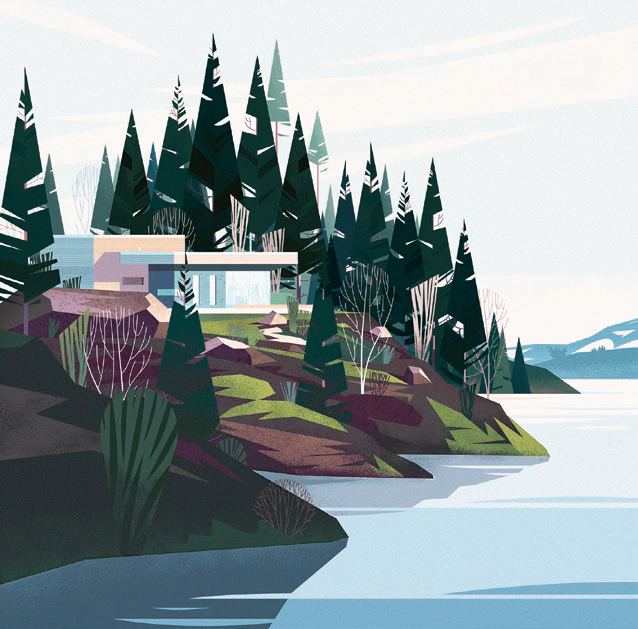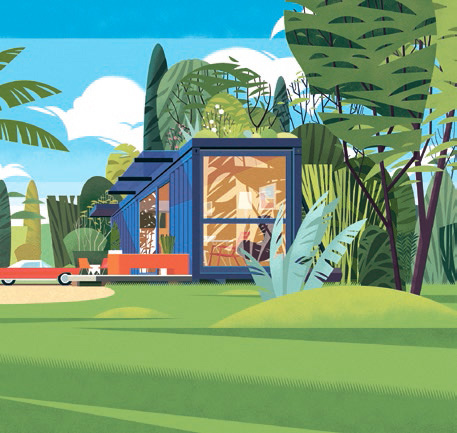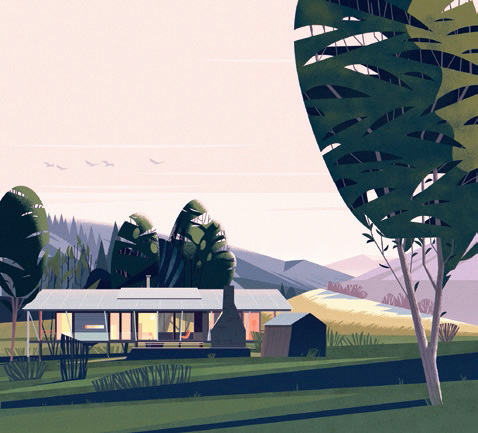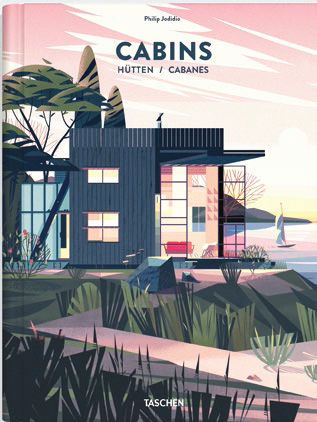Architecture of Dreams - Page 2
 |
There’s a kind of push and pull between working as a designer and as an illustrator, and Cruschi says she enjoys both. She also moves in the direction of fine art, doing work for herself, not for a client.
She sells prints online and shows work in galleries. Much of her personal work is seen in her books, which aim to entertain both the very young—her first, Ré-Créatures, was designed for toddlers—and adults. Some of her books delve into the scientific, historical, and emotional meaning of color.
Colorama, from 2017, features facing pages, one filled with a single color, the other with an object of that color—‘Bleu de Travail,’ with Charlie Chaplin in worker’s denim, ‘Ivoire,’ paired with an elephant with tusks. Colors are arranged according to the chromatic scale, and text provides elucidation.
 |
“I love [colors] for what they are,” Cruschi says—“for the memories they awaken in me, but also for the story they tell me when I question their origins.”
“We learn where the indigo comes from, why the flamingos are pink and the beetles are green,” she says, adding, “or what do a strawberry and an autumn leaf have in common?”
The book has been translated into seven languages, including English. The colors need no translation.
Cruschi is also working on a project she calls “la science sensible” (the ‘science of feeling’ or ‘delicate science’), “a chromatic circle in which I translate emotions and personality traits by a colored spectrum.” She says it is at “the base of my work as a graphic designer.”
 |
Her books take on sculptural qualities. In Ré-Créatures, each page is sliced in three horizontally, and each slice shows a portion of a creature. By manipulating pages, readers can create new creature after new creature.
“Marie-Laure’s work is very popular in France, and she is admired and appreciated by many people within the French illustration community, I included,” says artist Jérémie Claeys, who featured Cruschi on his popular podcast Sens Créatif. Her work is “complex, beautiful, intricate, and offers many levels of details, which is impressive.”
“To my knowledge, Marie-Laure’s work fits into a new wave of French illustrators, including Vincent Mahé, Tom Haugomat, and Bruno Mangyoku. They have this in common—it’s intricate, very strong technically and rich visually, with a lot of details,” he says. Claeys also sees the influence of “retro-vintage stuff” on her work, and on his own.
 |
Another fan, and friend, is Mike Stefanini, a French designer and illustrator who runs Atomike Studios and whose motto, he says, is “I've been pretending to be American since 2000.”
“I find Cruschi’s work unique,” he says, “because it is very demanding without being demonstrative, because there is an alchemy between something that comes from graphic design and illustration work.”




